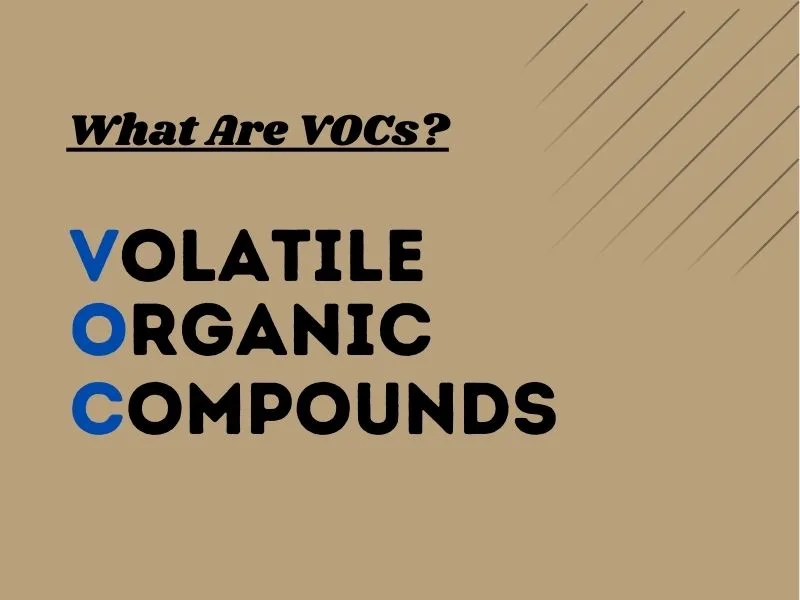
So you finally finished that project you have been working on all week. You put in countless hours of cutting, sanding, and gluing just to get to this point; a finished project. Only it’s not finished just yet because, well, there’s no finish on it.
Sure, it looks good without applying a wood stained finish, but you know that the right selection of wood stain can take this amazing project to the next level. You get everything prepped and have your wood finish ready to go, but you stop and think,
“Should I be wearing a mask for this?”
This scenario has happened to me and I didn’t really have a good answer. It seemed like a good idea to wear one but was it really necessary? That’s when I started to scour the web to see what I could find. I found a few different answers but ultimately came to this conclusion.
Yes, you should wear a respirator when applying wood stain. All commonly purchased wood stains utilize solvents that generate VOCs (volatile organic compounds) after application. These solvents allow the stain to dissolve the pigments and dyes until application at which point the solvent will evaporate. VOCs are potentially dangerous to your respiratory health and their exposure should be limited by using a respirator and applying wood stain in a well-ventilated area.
Continue reading as we dig further into VOCs and what you can do about them.
What are VOCs?

VOC stands for Volatile Organic Compound and refers to gases that are emitted from chemicals with high vapor pressure. A high vapor pressure means that the compound, or solvent in the case of woodworking, will evaporate easily at room temperature.
VOCs can be found everywhere and are typically responsible for the strong odor you might notice throughout the day. VOCs are the byproduct of the necessary addition of solvent to many different products.
Why are Solvents Necessary in Wood Stain?
VOCs are a byproduct of solvents used in wood stains, varnishes, paints, and more. Pigments and other compounds are typically not water soluble, meaning that water alone will not allow the mixture to dissolve. A chemical agent (solvent) is added to allow these compounds to dissolve and mix. Without the addition of a solvent, there would be clumps of pigments and resin with no chance of being applied to the wood’s surface.
When a solvent is introduced, it gives the wood stain a nice liquid consistency that can be easily applied to a surface. Once the finish is applied, the solvent will begin to evaporate (off-gassing) leaving the pigments on the surface but emitting VOCs into the air during the process.
Is Wood Stain Toxic After it Dries?
First, let’s make a distinction. The wood stain goes through two phases; drying and curing. Wood stain can dry fairly quickly, usually within a few hours at most. Curing takes a bit more time, but most stains should be cured within 24 to 72 hours. However, this is just an estimate and will be determined by the type of stain, type of wood, ambient temperature, and humidity.
Just because the stain is dry does not mean that the toxicity is gone. There is still solvent present and evaporating from your workpiece. While the solvent is still evaporating it is generating toxic VOCs. This will continue until the stain has fully cured. Once your workpiece has cured, it will have lost its toxicity and be considered safe.
When Can I Bring my Stained Project Inside?
The time you should wait before bringing your project indoors can vary and is dependent on your curing time. If it has been 24 to 72 hours and the wood is no longer emitting an odor, it is safe to bring it indoors.
In some instances, the wood-stained project will come into contact with food. All wood stains manufactured today are considered food-safe after curing. In these instances, it is typical to wait at least 30 days as a safety precaution. This will give the solvent enough time to ensure it is fully evaporated or bonded before being used in contact with food.
Recommended Respirator for Staining Wood
If you didn’t notice, the title of this section says respirator instead of a mask. So, why is that?
In short, a mask is a face covering whose main purpose is to just block physical particulates from entering your airways. Whereas a respirator is designed to give a tight seal and filter out airborne gases or fumes. The FDA has some insightful information about the different types of masks and respirators. Click here to check out their article if you would like a more detailed explanation.
Since we are discussing VOCs in this article, we will be focusing on a respirator. A respirator is what you would want to use when staining wood to help prevent breathing the toxic fumes released by the wood stain’s solvent. If you are interested in blocking out physical particulates, such as fine sawdust, check out this article here where I discuss the importance of dust collection in your shop.
The hazard while staining wood is not particulates but the toxic fumes created. This rules out the typical N95 disposable respirator, as they are not suitable for filtering gases or vapors. The type of respirator that you will need for filtering out VOCs has a tight-fitting seal with a filter or cartridge, that is setup specifically for organic vapor filtering. The respirator should have a rating of P95 or higher.
There are a ton of options on the market, and with all the different filtering options it can be a bit hard to choose what respirator is right for you. Click here for an option from 3M, that is a great choice if you are unsure of what to get. 3M is a reputable brand and this mask has great marks online. This respirator is designed specifically for filtering out the organic vapors from paints and stains.

Best Practices when Staining Wood
So we have discussed how staining wood can impact your respiratory health, and how a respirator can help protect you from the harmful impact that VOCs can have. However, there are some best practices that you should also implement, that will help limit your exposure to those toxic fumes.
- Always apply stain in a well-ventilated area
- Use a P95 mask with VOC filtering
- Choose a stain with low VOC content if applicable
- Give your project plenty of time to cure before bringing it indoors
- Always wear eye-protection
- Hang any stain-soaked rags outside to dry completely before throwing them away


